Like all best London gunmakers, Purdey has a highly recognisable house engraving pattern. The current pattern is a design that evolved in the 1870s under James Lucas, the head in-house engraver who served Purdey from 1855 until 1915. The design he originated is a delicate fine scrollwork, surrounding bouquets of roses, which the factory today refer to simply as ‘Standard Fine’. That is not to say that this is the only pattern of engraving used, as Purdey has always provided ‘Extra’ finish when requested.
Large Scroll and game scenes appear in the 1880s, and gold inlay has been noted on guns built in the 1860s. However, every now and then a Purdey appears on the market that is almost entirely un-engraved, with the exception of ‘J. Purdey & Sons’ on the bars of the sidelocks. This lack of engraving, together with often having a faded black finish, has led to such guns being referred to as ‘funeral guns’ or ‘black widows’. The stories normally associated with these two terms are that the gun was built plain and blacked in mourning for the death of Queen Victoria in 1901, or was left unfinished after its owner died in the First World War.
These terms have become particularly popular amongst collectors in the US market, but unfortunately, they are entirely, and demonstrably, spurious. In the case of Queen Victoria, her death was sudden and unexpected, and her funeral was held just two weeks later. There were representations made by businesses that the prescribed period of mourning, one year, should be reduced lest it affect trade. As such, although there was a period of wearing black, Purdey guns were not suitable for demonstrating mourning, particularly with the game season having closed on February 1st, three days before the funeral. 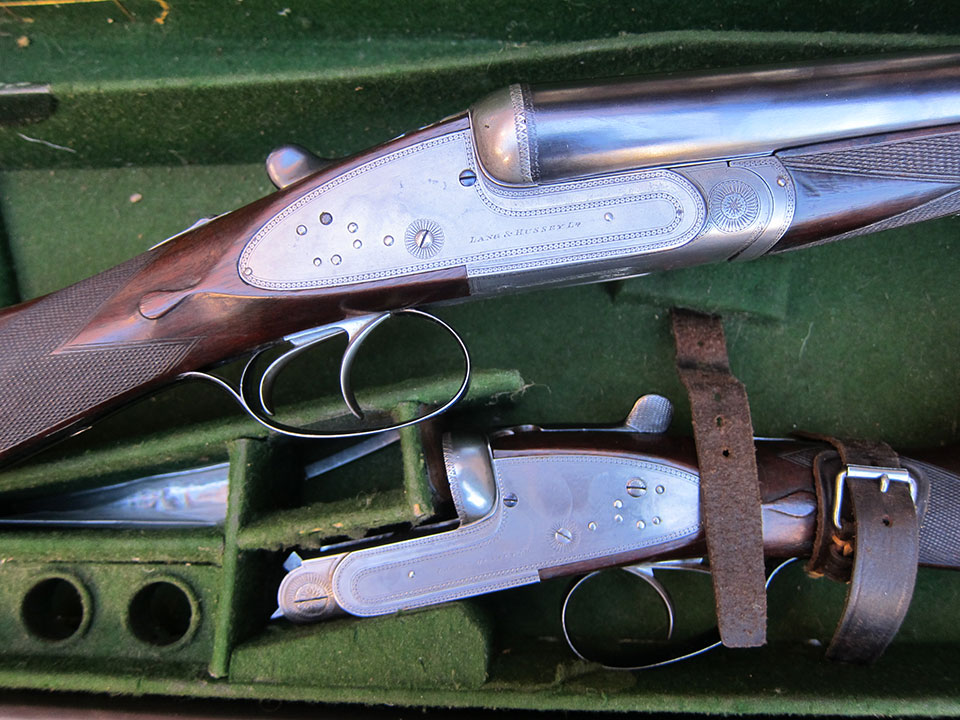
It is also unusual that the engraving was omitted for economic reasons, although there was a small saving to be made in having an un-engraved gun, and there are some guns that were left completed un-engraved at the owner’s request. This was also a practice of gunmakers such as Joseph Lang and Cogswell & Harrison, although an un-engraved Purdey could still be more expensive than having a fully engraved best gun from another London maker.
To understand the background to these guns, it should first be made clear that such guns are usually recorded in the Purdey dimension books as ‘out in black’. According to those gunmakers who have handled them, these are often ‘soft’ actions, having never undergone the case hardening process. This essentially implies that the gun is unfinished, and that the gun was not intended to remain un-engraved. That they remain in good, usable order after all this time is testament to the skill of those who forged and filed the actions in that period. Such guns are far from common, even amongst Purdey’s limited production figures, and this may be why they have attracted an aura of mystique.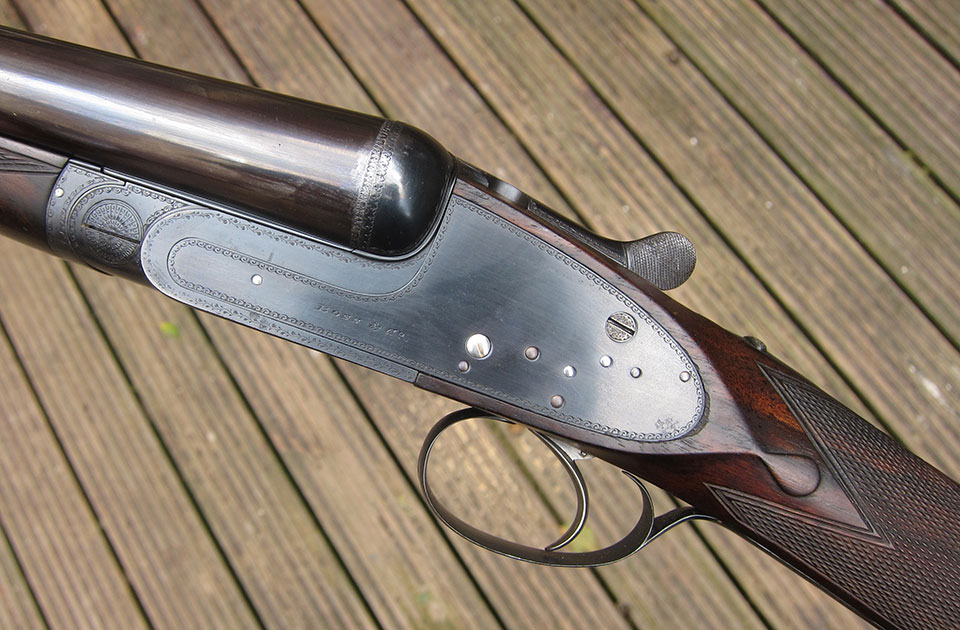
From the mid-1870s, the company’s record-keeping system was standardised into a single ‘Dimension Book’, containing all of the relevant details of each gun, recorded in numerical order. This is the same format that we use today, making it possible to generate production statistics, starting in 1878. As the ‘black widows’ are supposedly a result of the First World War, the figures and details listed below cover the period up until 1926, as this is when the first ledger after Great War finishes.
The first guns found that are noted as having gone ‘out in black’ appear in 1884. The first of these was no. 11068, and the entry includes a note that is telling for the story as a whole: ‘This gun was out in the black for nearly 3 years’. Certainly, the completion dates of its contemporaries sit squarely in the second half of 1881, whereas this gun was only noted as completed on March 11th, 1884. That its time spent unfinished was exceptionally long is backed up by the other gun that went ‘out in black’ in 1884: no. 11967. This initially went out on August 1st, 1884, but was not noted as completed until December 8th that year. It would appear that this gun was used for the grouse season, and then returned to be completed.
Moving through the records, it becomes clear that the practice of sending out unfinished guns for use really increased from 1890, reaching a high point in 1894 when fifty-seven guns were sent ‘out in black’. Interestingly, this is the same year that Purdey’s in-house cartridge production also recorded its highest production figure, loading 2.9million cartridges on the top floor of Audley House. After that year, annual figures generally remained around forty, dropping as low as eleven in 1905, before rising again to fifty-two in 1910. The numbers in the years immediately prior to World War One then hover in the low forties again, but predictably reduce to almost nothing during the war. After 1921 only one more ‘black’ gun is recorded, in 1926.
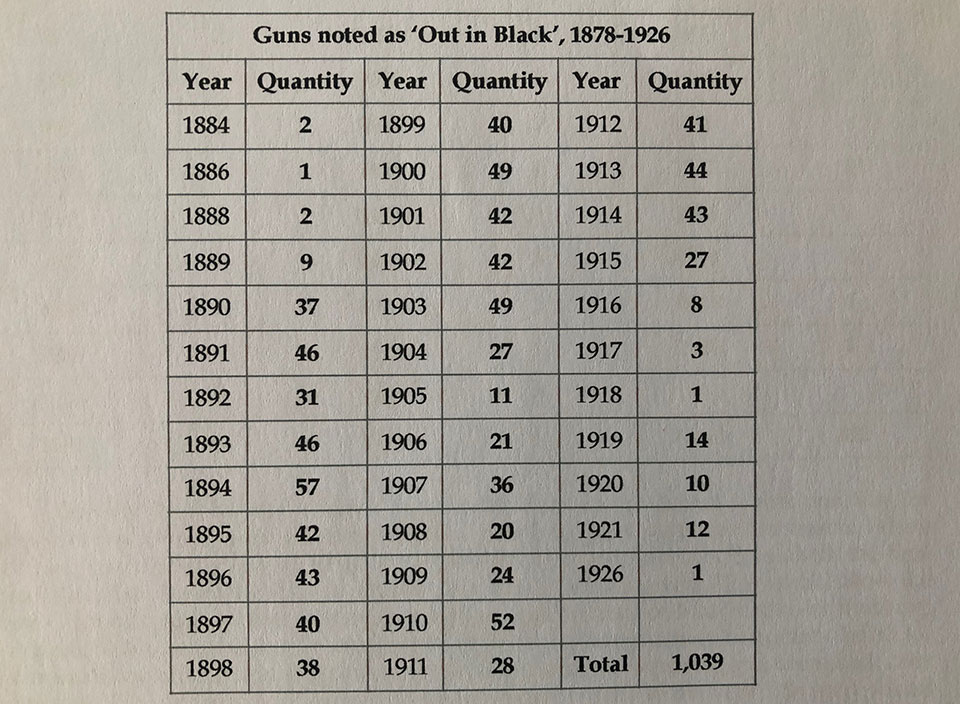
As can be seen, these figures do not correspond with either of the stories told to explain such guns existence, and in fact tell a rather different story, particularly as it can be seen that the figures for either 1901 or the late 1910s fail to reflect a particular spike in production of ‘out in black’ guns.
At the same time, the figures for those specifically recorded as ordered un-engraved during the same period are equally unreflective of anything other than personal impulse. In fact, it is possible to suggest that clients were influenced by seeing guns on display in Audley House, a trend which still occurs today. One notable exponent of this was a man called Clement Bethune, a resident of Lille who ordered five guns from Purdey in 1912. Four of these were specifically noted as being built on Rogers actions, left un-engraved and with a blued finish, with ‘his peculiar chequer’ applied to the stocks.
Each gun was in a different calibre, and when he ordered one final gun the following year he had an example in 10-, 12-, 14-, 16-, and 20-bore. The 16-bore was recently offered at auction, and appears intended more for pigeon or duck shooting than driven game. This would have been fitting for the blued finish, which usually appears in Purdey’s ledgers on guns built for wildfowling. Bethune’s invoices also suggest why he chose to have Rogers’ actions rather than Purdey, as his guns cost only £83 2s, at a time when a Purdey with house engraving cost £92 2s. However, given how specific he was in every detail, perhaps there was more to this than simple monetary expediency, but unless further correspondence comes to light his motivations will remain a mystery.

So why then do ‘out in black’ guns exist? The answer is that it was one way for Purdey to meet the age-old customer demand – having guns ready for the season. Where recorded, guns going out unfinished were often initially supplied in August, with the final completion date normally being in May or June of the following year. This would allow the client to shoot a gun that was otherwise complete, and then return it to Purdey for finishing. The black finish, as far as can be ascertained, provided a rust-resistant, temporary finish for the unhardened action, removing the need to soften the action when the gun came back after the season. This might not be for several years, as can be seen in the very first entry found and that for no. 12577, a gun built for Richard D’Oyly Carte, the hotelier and theatre impresario responsible for the Savoy Hotel and Theatre, which notes ‘This gun he had in the black for two or three seasons’.
As such, there are a small number of guns that were never returned to Purdey for completion. One documented example is a pair of guns made for Sir William Eden, father of Anthony Eden MP. He received his guns in 1905, and used them in their unfinished state up until his death in 1915 at the age of 66. In fact, they remained blacked and un-engraved when they were auctioned in 2012, despite having been worked on by Purdey in the intervening years. It also emerged during the research for this article that he had an earlier pair, no. 13487 & 13488, which were finished in 1890 with ‘Extra handsome scroll detonating’. This would have meant that, although the actions bore Purdey’s traditional rose and scroll engraving, the fences were carved with a form of scroll, perhaps similar to that found on Douglas Haig’s guns, completed in 1887 (although his were simply described as ‘Handsome scroll detonating’).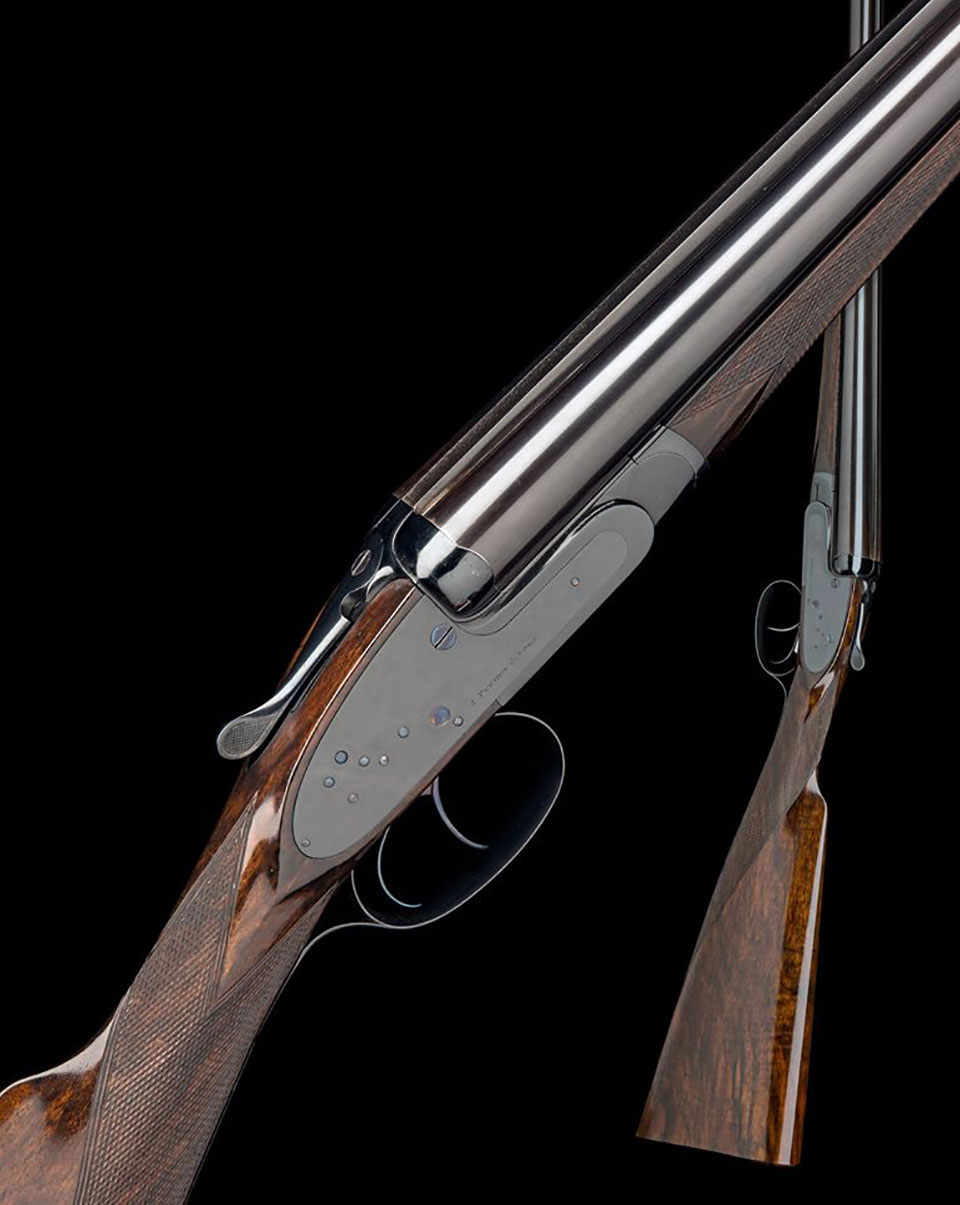
As noted above, the earliest records used in this survey are dated 1878, and it is possible that earlier guns went out in a semi-finished state. However, for the period that is covered, it is clear that the number of guns going ‘out in black’ grows significantly after 1890. This period is often described as the high point of driven game shooting, and the demand for guns and ammunition in Purdey’s records supports that. The practice did not end in the interwar period, as guns have been seen recorded as going out ‘unfinished’ as late as the 1970s.
Two final figures, based upon research conducted in the late 1980s, may further confirm why such guns date predominantly to pre-World War One. Between 1890 and 1914, Purdey produced, by serial number, around 8,000 guns. Yet between 1918 and 1986, when the study was carried out, the company only produced another 7,500 guns. It is that volume of production, much higher than has been witnessed within living memory, that best expresses the need for guns to be produced at speed, and how Purdey attempted to meet that demand.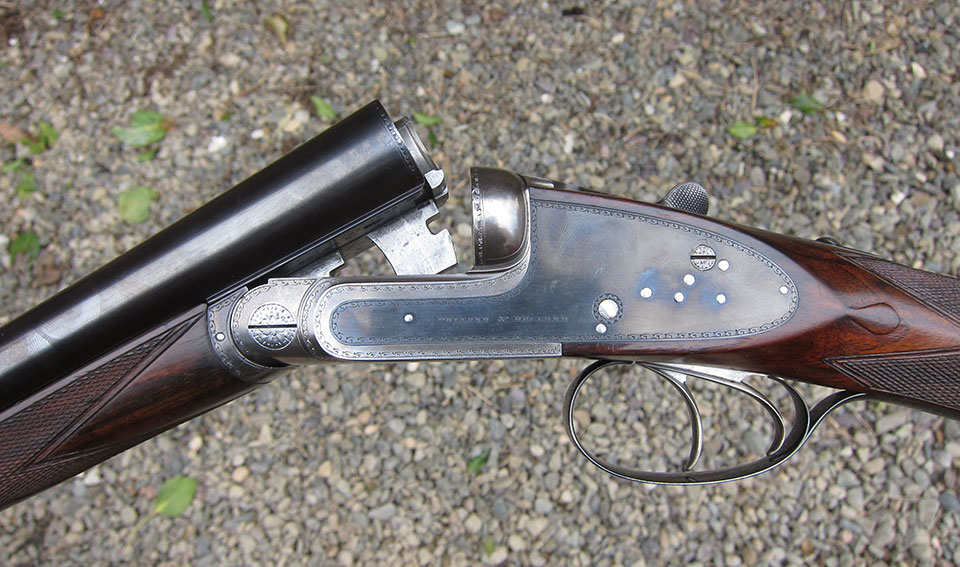
Dr Nicholas Harlow is Gunroom Manager at James Purdey & Sons.
Published by Vintage Guns Ltd on (modified )




